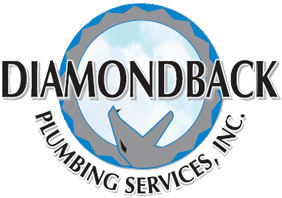If you’re facing the messy dilemma of an overflowing grease trap, you’re not alone. Many homes and businesses struggle with this issue, which can lead to unpleasant odors, potential health hazards, and even costly repairs if not addressed promptly.
At Diamondback Plumbing, we understand how important it is to keep your environment clean and functioning smoothly. Today’s guide will walk you through the essential steps to tackle your overflowing grease trap, ensuring your plumbing remains in top shape.
Stay with us as we offer practical advice that’s both easy to understand and implement, making your grease trap woes a thing of the past.
Recognizing the Signs of a Full Grease Trap
One of the first signs that your grease trap may be nearing its capacity is water pooling around the area. This often indicates that the trap is full, and the fats, oils, and grease (FOG) are no longer being contained effectively, causing water to back up and spill over.
Similarly, if you notice that your drains aren’t draining as quickly as usual, it’s a telltale sign that your grease trap is full and needs attention. The restriction in flow is typically due to the accumulation of FOG within the trap, slowing down the water movement.
Unpleasant odors are another common and noticeable sign of a full grease trap. When FOG begins to break down, it can produce a foul smell that is hard to ignore. This odor is unpleasant and can create an unwelcoming environment for homes and businesses alike.
Lastly, unexpected noises, such as gurgling sounds from your plumbing, can indicate that the grease trap is full. These noises occur when trapped air, which is unable to escape due to blockages caused by FOG, moves through your plumbing system.
Paying attention to these signs can help you address and prevent the issues associated with an overflowing grease trap, maintaining a clean and pleasant environment.
Implementing Best Practices for Grease Trap Maintenance
To effectively manage and prevent the issues accompanying an overflowing grease trap, business owners need to implement regular cleaning and servicing of their system. This proactive approach ensures the longevity and efficiency of your grease trap and significantly reduces the risk of potential blockages and overflows.
Regular cleaning removes the accumulated fats, oils, and grease (FOG), maintaining the trap’s functionality and effectiveness.
Furthermore, maintaining logbooks and keeping detailed maintenance records are crucial in managing your grease trap system. These records provide important insights into the frequency of cleanings and services, allowing for optimizing maintenance schedules based on actual needs rather than guesswork.
Additionally, in the event of regulatory inspections, having organized and up-to-date maintenance records can demonstrate compliance and responsible management of your grease trap, potentially averting fines or other penalties.
By adopting these best practices, business owners can significantly mitigate the challenges posed by overflowing grease traps, ensuring a cleaner, safer, and more operational environment for their businesses.
Immediate Steps to Address Grease Trap Overflow
When faced with a grease trap overflow, acting swiftly to minimize the impact and prevent potential health hazards is critical.
Follow these steps to address your grease trap issue effectively:
- Cease the Use of All Water: Immediately stop using any water that drains into the grease trap to avoid exacerbating the overflow.
- Wear Protective Gear: Equip yourself and any staff members involved in the cleanup with gloves, eye protection, and masks to avoid direct contact with harmful bacteria or waste.
- Contain the Spill: Use absorbent materials like sand or commercial absorbents to contain the overflow and prevent it from spreading.
- Ventilate the Space: Open windows or use fans to ventilate the area, reducing the risk of inhalation of harmful gasses or odors.
- Contact a Professional Service: Reach out to a professional plumber or grease management service to properly clean and service the grease trap.
Health and Safety Protocols
To ensure the safety of your staff and customers when dealing with grease trap issues, adhere to these health and safety protocols:
- Proper Training: Ensure all staff members are adequately trained on what to do in case of a grease trap overflow, including using personal protective equipment (PPE).
- Regular Maintenance: Following a routine maintenance schedule helps prevent overflows and related health hazards.
- Immediate Area Restriction: Restrict access to the affected area until the overflow is fully contained and cleaned up, preventing unnecessary exposure.
- Sanitization: After addressing the overflow, thoroughly sanitize the area to eliminate any lingering bacteria or hazardous materials.
- Dealing with Exposure: Have a clear protocol for dealing with exposure, including washing any affected skin with soap and water and seeking medical advice for any concerning symptoms.
By following these explained steps and protocols, businesses can effectively manage a grease trap overflow, ensuring the well-being of your staff and customers.
Conclusion
In conclusion, maintaining an effective grease trap system is crucial for preventing overflows that can lead to environmental hazards and health risks. By recognizing the signs of a full grease trap, such as water pooling, slow drainage, unpleasant sewer odors, and unusual noises, businesses can take proactive steps to address these issues before they escalate.
Implementing best practices for grease trap maintenance, including regular cleaning, keeping detailed maintenance records, and adhering to a routine service schedule, can significantly reduce the risk of overflows.
Additionally, being prepared with an emergency response plan and following health and safety protocols ensures that businesses can swiftly and safely manage any unexpected overflows, safeguarding the well-being of staff and customers alike.
For businesses in Phoenix, Arizona, facing challenges with their grease trap systems, Diamondback Plumbing offers professional and reliable services to ensure your system is operating efficiently and compliantly.
Whether you require emergency services, regular maintenance, or advice on managing your grease trap, Diamondback Plumbing is here to assist. Don’t wait for an overflow to disrupt your business— visit our website or give us a telephone call to schedule a grease trap assessment.
